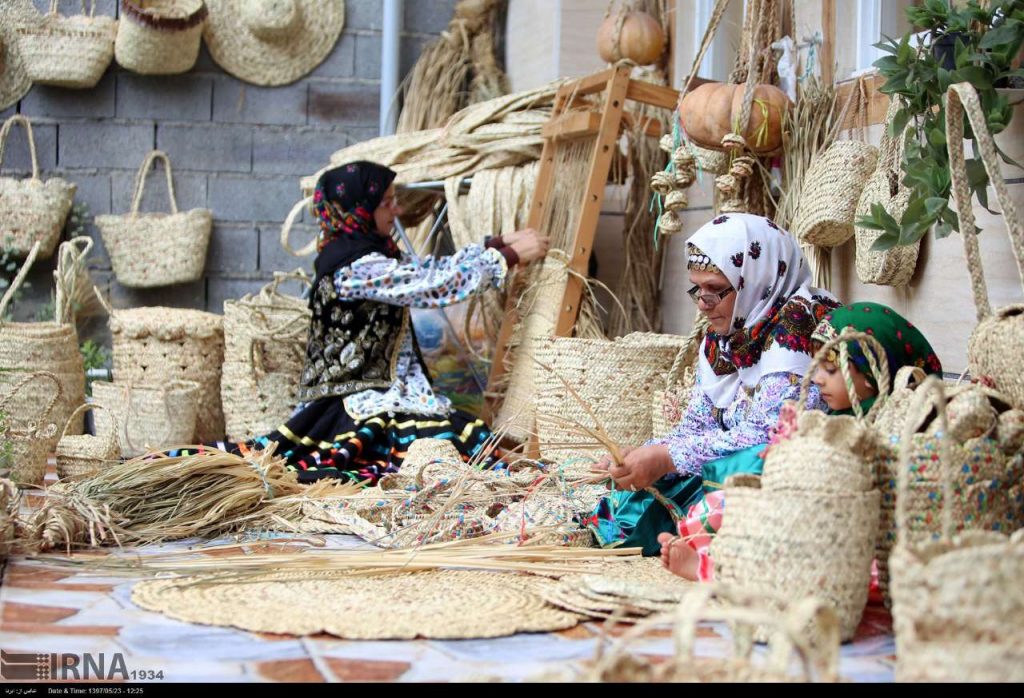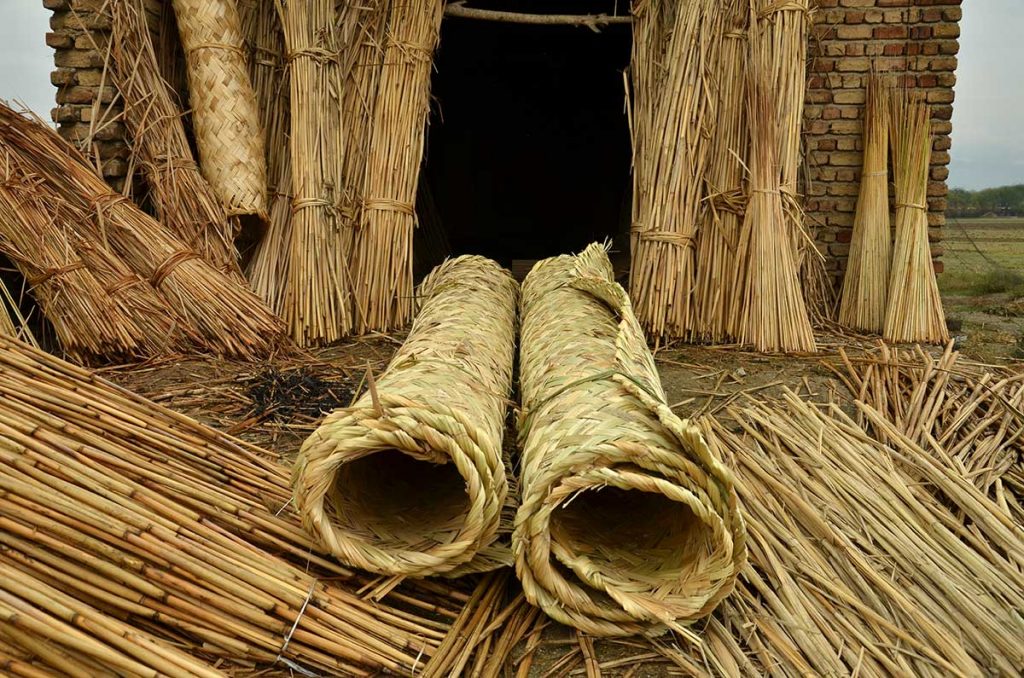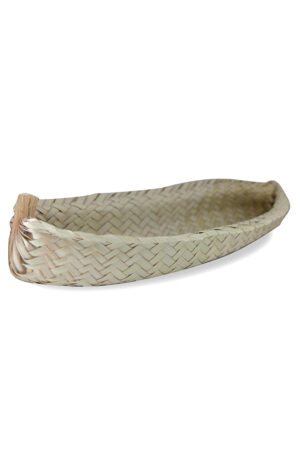
- by soheil
- Handicraft / useful article
- June 18, 2022
- Post Views: 1,936
- 0
With a history reaching back more than 5,000 years, wicker is the oldest material used to create furniture. In fact, one of the earliest methods of furniture construction ever documented in history is wicker, which has been present for thousands of years.
From the Far East to nations like China, Indonesia, Malaysia through Iran, Iraq, Egypt, and even among American Indians, wicker weaves may be found all over the world. Because of this, it is impossible to pinpoint its specific origin.

After the cave-dwelling phase was through, according to human evolution, people lived as nomads until they began to settle down. Transportability and simple habitat construction are two requirements of a life of nomadism for humans, and the wicker meets both of these requirements. In actuality, wicker were used to construct the earliest shelters after the caves. Naturally, it is very difficult for experts in this field to learn more about the first human undercarriage. There are extremely few samples available for investigation due to the loss of natural fibers over time.
However, some archaeologists believe that the mat weaving industry in Mesopotamia was first created by the Sumerians or Egyptians and dates back to more than 5,000 years ago.
These findings also show that wicker weaving is the first substructure used by humans that dates back to before the creation of pottery and they were also used as molds for pottery.
As old as agriculture itself is, weaving has been used by humans as a means of survival for making clothing, shelters, and other items.
Thus, it may not be surprising to realize that the history of wicker furniture is not only firmly ingrained over the years but also ingrained in the history of civilization.
The terms wika, which means “to bend,” and vikker, which means “willow,” are the roots of the word “wicker,” which has Scandinavian origins.

Mat in Mesopotamia
Rare artifacts discovered in Mesopotamia and Africa demonstrate how the inhabitants of these civilizations woven an underlayment for a mat using plants and straws from the lower marshes of Mesopotamia. Of course, historical research indicates that this natural weave has been used for more than just a straightforward mat.


Mat in IRAN
The history of mat weaving in Iran is also quite old, and the most reliable source on the subject comes from the Shahdad region, which is in the Kerman province and dates back to three thousand five hundred years.
One of Iran’s most significant crafts is the wicker basket. Since ancient times, Iranians have used wicker items in their homes and kitchens. Persian wicker baskets have once more come to have a special place in the hearts of consumers over time.
It appears that interior designers were able to establish a special space for such things for enthusiasts and enthusiasts together with the modernisation of decorations. Due to their handmade nature, each of these baskets is unique, which adds to their appeal.
Mat in Egypt
Pharaohs in ancient Egypt were interred with delicately woven rush or reed furniture, notably Tutankhamen (c. 1341–1323 BC), who was interred with various pieces of wicker, including a chair seat, a headboard, and a stool.
The woven furniture of Egypt served as an inspiration for the Romans, who used wicker as their own furniture-making method and popularized the look throughout their empire.
The first tangible proof of wicker, which dates back 4,000 years to Ancient Egypt, was discovered in Egypt.
Chests, wig boxes, chairs, and footstools were all built of wicker in ancient Egypt, which was composed of rattan, reed, and papyrus, which resembled marsh grass.
Wicker furniture at the period was regarded to be expensive, therefore the lower classes couldn’t buy it and the middle classes could only afford some pieces. It was such a valuable resource that pieces of royal furniture were constructed using it. Egyptian pharaohs’ tombs contained woven reed furniture. Numerous wicker furniture items, including stools, chair seats, and headboards, were found within Tutankhamen’s tomb.


Mat in Europ
Rattan, a stronger material that was well suited for wicker craft, was introduced to the West throughout the following two centuries as trade with Asia grew. Since European colonists first experienced the craft in Southeast Asia, imperialism also contributed to a new understanding of wicker as exotic and Eastern. Since it wouldn’t warp or crack in heat and humidity, rattan wicker was the perfect material for tropical settings.
Later, as European explorers went to other regions of the world, they found additional materials that could be used to manufacture wicker. Following this, the era of European empire began, during which wicker was introduced to all of the continent’s colonies. Then, as production techniques advance, wicker becomes more economical and easily accessible anywhere in the world.
Mat in modern day
Man utilized a very basic technique to generate the necessities of existence prior to the development of industry and the introduction of machines into the production cycle. Mass manufacturing of commodities was a necessity of contemporary life due to population expansion.
In this manner, the product was either manufactured using only the maker’s skill and strength and basic taping, cutting, sewing, etc. instruments or it was produced using basic machineries.
Machines that only functioned with the energy of the creator’s hand and foot movements, as opposed to modern industrial machines that move using energies like electricity, fossil fuels, etc.
These handicrafting techniques have lost importance in the modern world, but the goods they generate are still very valuable both artistically and commercially.
How to maintain and wash the Mat:
Heat and fire protection, pressure, impact and sharp objects are some of the ways to maintain, but these products can be washed with lukewarm water and ordinary detergents.

Mat usage:
From the past to the present, the Wicker has had various uses such as bags, bread baskets, baskets, fruit baskets, mats, screens and lampshade caps.










